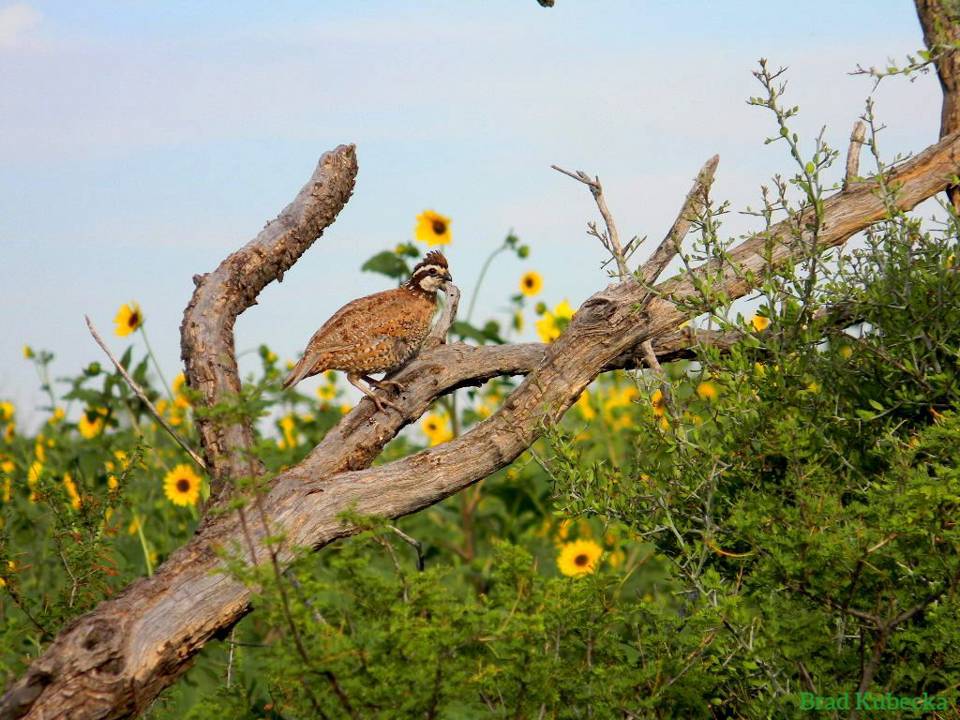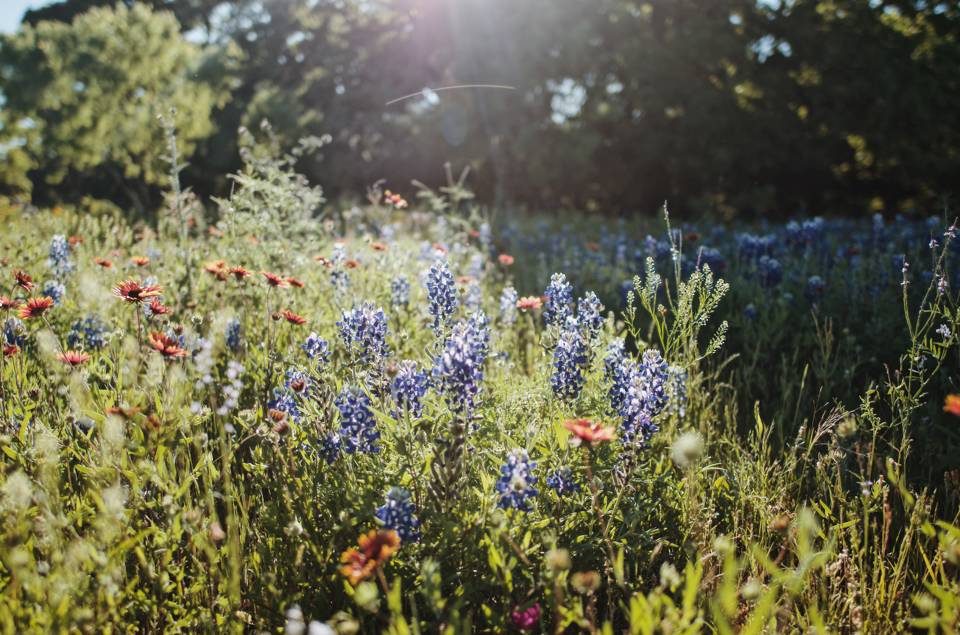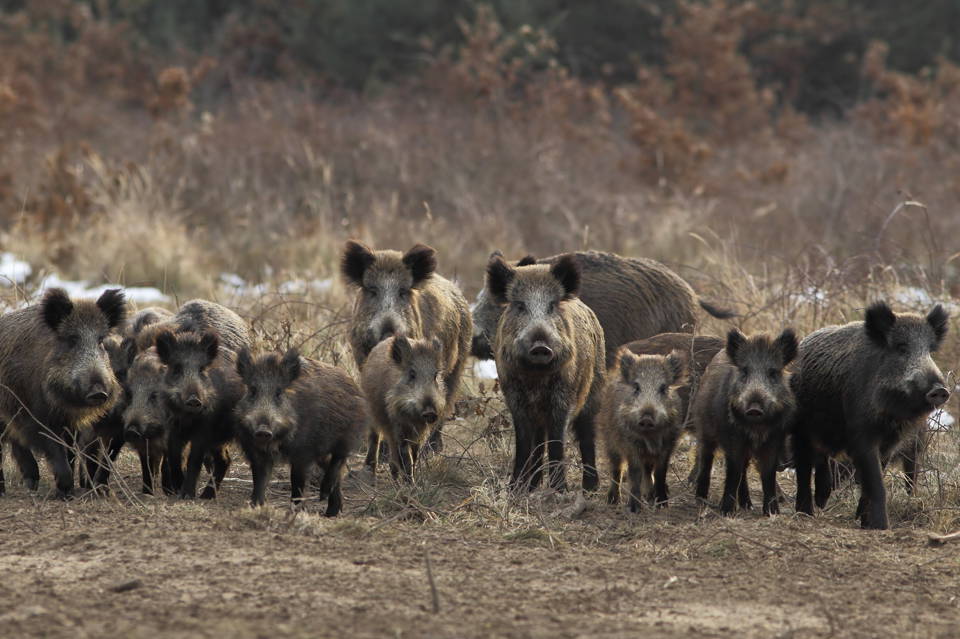

A land stewardship experience dispatch
August 6, 2020
We're building a community of practice around land stewardship from the wings that fly above to the water trickling through the soil. Check out this peek into the 22 mini-decks you can dive into today.
Have you ever wondered why bobwhite quail (Colinus virginianus) don't fly long distances like other bird species? Taking a look at the bobwhite’s unique features can better help landowners and outdoor enthusiasts understand how they evade predators, the type of diet best suited for their beak and digestive system, and how they reproduce. In the PLS deck Learn the Anatomy of a Quail, we can explore the internal and external anatomy of the bobwhite to help inform future land and wildlife management decisions.
Learn About the Western Chicken Turtle
Did you know that the western chicken turtle’s (Deirochelys reticularia miaria) neck can extend to 70% of its body? Unique features like this help the western chicken turtle interact in its habitat. Brush up on your turtle facts while learning more about where the western chicken turtle lives, what it eats, how to identify it, as well as what current and previous conservation efforts researchers engage in to help ensure its long-term survival in the PLS deck Learn About the Western Chicken Turtle.
From arthropods to forbs and grasses to woody plants, quail consume a wide range of food throughout the year. Each source provides a unique benefit to quail depending on the time of year and maturity stage of the bird. The PLS deck What do Quail Eat provides a comprehensive overview of a quail's diet.
Using the Wild Pig Reporting Tool
A new feature on our institute's wild pig website offers Texas landowners and homeowners an easy-to-use tool to report sightings of wild pigs and the damage that may have occurred. This online reporting tool takes only a few minutes to capture data like location of siting, number of feral hogs sited, estimations on age, the type of damage being caused and includes an entry for photo submissions. The submitted reports will be used to support outreach efforts and help locate areas of high activity to guide both management and educational efforts across the state. Ultimately, this tool will lead to more efficient control of wild pigs state-wide.
How to find natural resource professionals in Texas
When looking for natural resource conservation and management guidance, go to trusted organizations for reliable information. Some of the most valuable groups Texans can utilize include Texas A&M AgriLife Extension Service, Texas A&M Forest Service, Texas Parks & Wildlife, and the Natural Resources Conservation Service. We laid out each organization's expertise, programs and how to get in touch with their professionals in the PLS deck How to Find Natural Resource Professionals in Texas. Find your expert and add them to your contact list; they are there to serve as a guide and they're the best around.
How to construct wildlife ramps
Many wildlife species, including sage-grouse, are known to accidentally drown in stock tanks that do not have adequate escape ramps. The good news is that effective wildlife escape structures are easy and inexpensive to build and can virtually eliminate wildlife mortality in water troughs or wherever water is collected and stored. In the PLS deck How to Construct Wildlife Ramps landowners can learn how to construct ramps in stock tanks or other like structures holding water to eliminate wildlife mortality and improve livestock health—sounds like a good weekend project.
Quail Plant Preferences: Vegetation
This PLS vignette is a series of interactive learning modules to help you identify Texas plants that are used by quail among other wildlife. Screenshot each photo to create your own virtual plant press in your camera roll to help you identify species more quickly in the field.
Quail make a range of 15 unique sounds, each with their own meaning and purpose. In this deck, you will listen to birdsongs and calls, learn the difference between the two types of sounds and why they are important. This could be the most entertaining vignette we have; we don't mind admitting that.
Habit Requirements of Texas Quail
Texas is home to four species of quails: Northern Bobwhite (Colinus virginianus), Scaled Quail (Callipepla squamata), Gambel’s Quail (Callipepla gambelii), and Montezuma Quail (Cyrtonix montezumae). Many Texans fondly recall experiences with quail, whether they were hunting or watching them, or just listening to their songs. Despite the interest in these quail species, their overall abundance, especially northern bobwhites, have declined over the past few decades. As populations in Texas grow rapidly, quail habitat decreases notably.
Human development leads to habitat fragmentation, and isolated habitat fragments result in small, isolated quail populations. These small, isolated populations are unable to withstand long-term unfavorable site and weather conditions, and have a greater risk of becoming locally extinct. Their ability to repopulate through a source population becomes less likely as distance grows from stable quail populations – a source-sink population dynamic. To help reverse this decline and manage land effectively for quail populations, landowners need to know the specific habitat requirements of each locally occurring species of quail.
Getting to know the Texas Quail Atlas
The Texas Quail Atlas identifies the four quail species native to Texas and breaks down the decline of quail populations over time. Recent research efforts, such as those funded by the Reversing the Decline of Quail in Texas Initiative, seek to determine what factors are contributing to the decline of quail in the state. Potential causes include: drought, land use changes, land fragmentation, habitat loss, invasive species, insecticides, diseases and parasites.
With interactive maps and ecoregion case studies, the Texas Quail Atlas is a great resource for landowners and wildlife enthusiasts interested in learning more about Texas Quail history, the changes across landscape for quail habitat and about the ecoregions where they thrive.
Ten Things Landowners in Texas Need to Know
Landownership is a responsibility like none other, and many say the heart of great land stewardship starts at the soil. No matter the purpose of a piece of property, knowing the ins and outs of a specific piece of land will allow landowners to prescribe the best management practices for healthy land. In this deck, landowners will learn the most efficient ways to get in touch with their specific natural resource exert for soil, water, and forestry resources to effectively manage their property.
Stretching from east Texas to the Rio Grande River, freshwater mussels can be found throughout the great state. Each species plays a vital role in the ecosystem and river health. The PLS vignette Learn about Texas Mussels breaks down what a mussel is, their cultural importance, their critical ecological roles and about their habitats. You'll be surprised at what you might learn in this deck.
Learning a Hurrican's Impact on Land
Using ecological expertise and remote sensing technology, NRI is working to assess the severity of disturbance to coastal forests and track the recovery of this natural vegetation which provides habitat for many species. This PLS deck takes a look at how Hurricane Irma impacted endangered species habitats in the National Key Deer Refuge, a protected area in the Florida Keys.
Quail Plant Preferences: Grasses
The PLS vignette Quail Plant Preferences: Grasses is a series of interactive learning modules to help you identify the various grasses and their uses by quail in Texas.
Learn the Differences Between Wild Pigs and Javelinas
Wild pigs are found in nearly all Texas counties, and there are currently more wild pigs estimated in Texas than in any other U.S. state. Because the vast majority (>95%) of Texas lands are privately owned, the responsibility of wild pig control falls primarily on private landowners. Outreach efforts and resources to relay science-based information related to wild pig biology and management remain important components of fostering private lands stewardship.
The resources provided in the PLS deck Learn the Difference Between Wild Pigs and Javelinas are intended to increase the understanding of wild pig biology, natural history, damage management, and control techniques. The NRI wild pig outreach program emphasizes best management practices, providing landowners with the outreach, technical assistance and resources needed to effectively abate the damages associated with wild pigs.
Learn How to Map with the Map My Property Tool
The Texas A&M Forest Service's Map My Property Tool is an excellent resource for landowners who want to better visualize their property and make smart land management decisions. Our tutorial videos provide information on the functions within the tool and how they can be used to create an accurate, informative map of the land and its resources.
Wild Pig Biological and Behavioral Drivers
Behavioral and biological drivers influence species and serve to direct their role within ecological niches. They primarily influence what wild pigs (Sus scrofa) do overtime. Some of these drivers include thermoregulation requirements, diet, social structure and influence from humans. This vignette provides practical considerations for selecting management strategies for wild pigs based on some of these behavioral and biological drivers.
Field to table Safety Precautions for Wild Pigs
As of 2019, wild pigs (Sus scrofa) occupied at least 35 US states and 253 of 254 Texas counties. Population modeling indicates wild pig numbers well into the millions for our state. Intentional abatement efforts remain a necessary component of conscientious private land stewardship to protect native plants and animals, as well as agricultural crops and livestock from various threats caused by wild pigs. Some people may decide to consume the wild pigs they catch, while others would never do so.
This tutorial provides an overview of safety precautions aimed at minimizing risks associated with wild pig management. Explore options including transport and sale as well as field and food safety considerations when handling, processing or consuming wild pigs.
Learn how to conduct the Texas Quail Index (TQI) on your own property. The TQI is a statewide monitoring program for quail populations and resources, consisting of 5 simple demonstrations throughout the year. In this tutorial, we'll explain the hows and whys of each demonstration and provide you with everything you need to get started.
Wild Pigs Negatively Impact Water Quality: Implications for Land and Watershed Management
Introduced to North America in the 1500's as a reliable food source by early European settlers, free-ranging domestic pigs established initial feral populations. Later, Eurasian wild boar released onto hunting preserves in the early 1900's escaped and hybridized with free-ranging pig populations. Intentional (illegal) and accidental releases since have further contributed to wide-ranging and growing wild pig populations.
While difficult to quantify monetarily, wild pigs impact water quality directly through bacterial impairment and indirectly through the degradation of riparian habitat. This deck provides an overview of some of the impacts wild pigs have on water quality based on their behavior, biology and preferred habitat.
Private Land Stewardship- Plant ID Lessons from the M.J. Hanna Ranch
Plant identification is an important hands-on skill for land stewards and outdoor enthusiasts to help make critical land management decisions associated with livestock or wildlife management, water conservation, and other natural resource activities. Learn how to identify common range plants found throughout the state of Texas through our virtual Plant I.D. vignette built on the M.J. Hanna Ranch.
Wildlife Management as Agriculture Use for Property Tax Valuation in Texas
Using wildlife management as an agricultural practice to qualify for the 1-d-1 Open Space Agricultural tax appraisal in Texas is relatively easy to switch from traditional agricultural uses such as cattle or hay production. The enjoyment associated with managing for wildlife makes the change in land use management worthwhile for many landowners. This deck outlines the purpose and process of managing wildlife as an agricultural resource.
Learn More
Private Land Stewardship Academies
Training land stewardship professionals working with private landowners and educating a community of practice on the importance of science-based conservation. Click Learn More for free access to resources.


 What do quail eat?
What do quail eat?
 Ten things landowners in Texas need to know
Ten things landowners in Texas need to know
 Learn the differences between wild pigs and javelinas
Learn the differences between wild pigs and javelinas
 Wildlife management as agricultural use for property tax valuation
Wildlife management as agricultural use for property tax valuation





